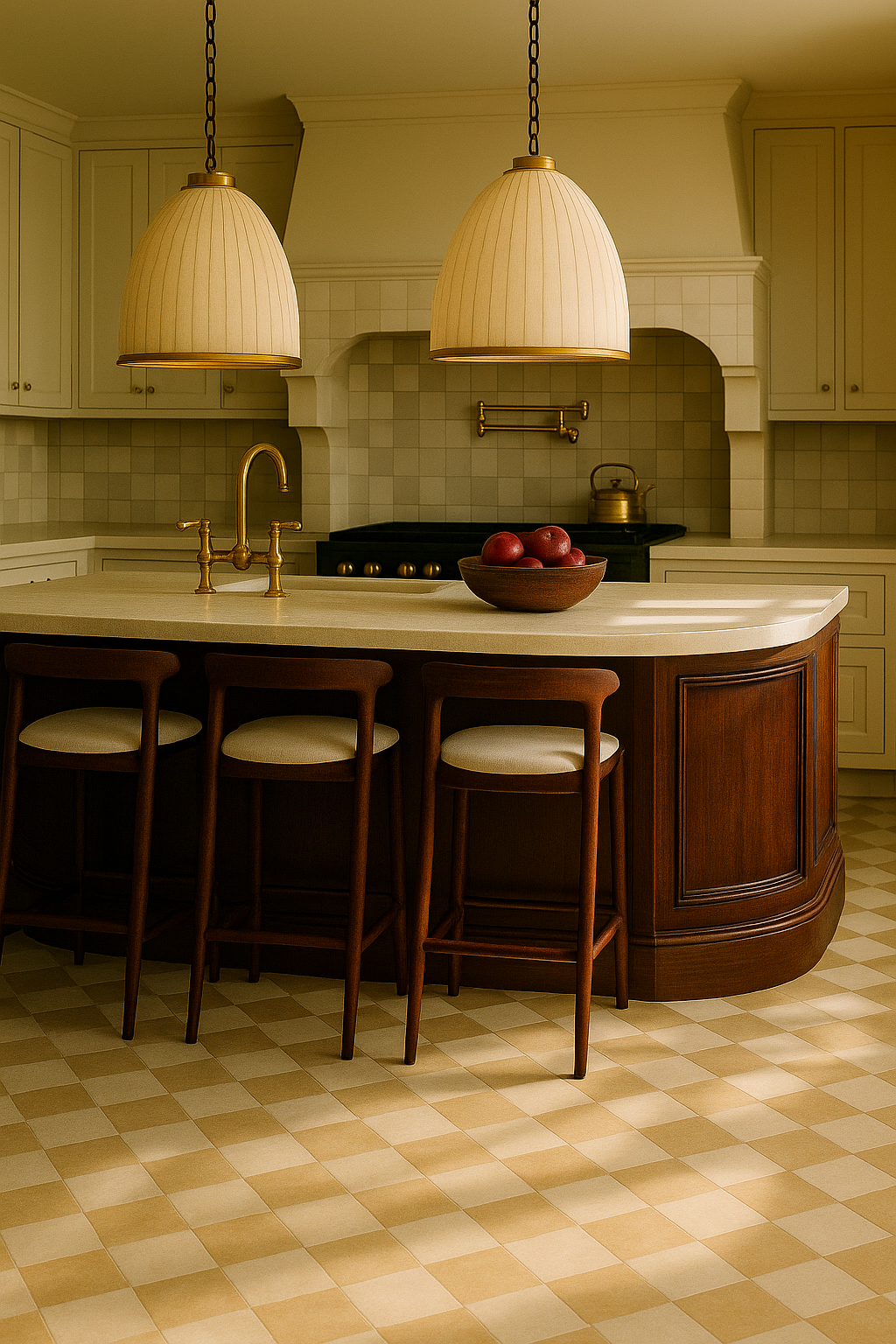The Power of Shapes in Interior Design— And How to Use Them With Intention
When most people think about design, they think about color, texture, and lighting. But there’s a subtle design element working just as hard in the background: shape. Shapes help tell the visual story of a room long before you realize what you’re reacting to. They add rhythm, guide the eye, soften a space, or strike a bold architectural note.
When you understand how to use shapes intentionally, every room becomes more balanced, elevated, and beautifully composed.
Let’s break down how shapes influence your home — and how to use them like a designer.
1. Curves: Softening and Anchoring a Space
Curved lines create a sense of flow, movement, and comfort. They’re welcoming, approachable, and instantly soften strong architecture.
Where curves shine:
Barrel-back chairs
Rounded ottomans
Arched mirrors or doorways
Curved sofas in a large living room
Circular hardware or organic-shaped lighting
Why they work:
Curves soften rigid corners, break up long hallways, and add femininity to heavily structured spaces. They’re also emotional — curves feel safe, calm, and nurturing.
Pro tip: If your room feels cold, sharp, or unfinished, add one curved piece. You’ll feel the difference immediately.
2. Lines: The Quiet Force Behind Every Room
Horizontal, vertical, and diagonal lines guide the way a space feels. They’re the skeleton behind the design.
Horizontal lines (long shelves, wide mantels, low modern sofas)
→ Create a sense of calm and grounding.
Vertical lines (drapery panels, tall cabinetry, elongated mirrors)
→ Add height, elegance, and a bit of formality.
Diagonal lines (stair rails, chevron floors, angled furniture layouts)
→ Bring energy, movement, and visual excitement.
Pro tip: If a space feels too “busy,” reduce competing diagonal lines. Simplifying the geometry instantly makes a space feel more luxurious.
3. Geometric Shapes: The Art of Structure
Squares, rectangles, and precise geometry make a room feel organized, tailored, and architectural. They bring order — especially in modern or transitional homes.
Where geometric shapes matter:
Grid-style gallery walls
Panel molding
Rectangular dining tables
Square backs on accent chairs
Structured cabinetry
Shapes take a front row seat in this kitchen from the pattern of the floor to the backsplash, hood range, and large dome pendants. Design by HLL
Why they work:
Geometric shapes bring clarity. They help anchor a room and create a sense of stability, symmetry, and intention.
Pro tip: When using a lot of geometric shapes, sprinkle in one organic or curved element to prevent the space from feeling too rigid.
4. Organic Shapes: Adding Soul, Warmth, and Nature
Organic shapes feel earthy, imperfect, and full of life. These shapes bring movement into a room and connect the indoors with the natural world.
Where you’ll see them:
Live-edge wood
Stone bowls and sculptural objects
Imperfect pottery
Wavy mirrors
Soft, asymmetrical furniture pieces
Why they work:
Organic shapes break up monotony, add texture, and create that “collected” feel your clients love.
Pro tip: If your home feels too sterile, add one organic element in every room — even a simple sculptural bowl can shift the energy.
5. Repetition: The Secret to a Cohesive, Expensive-Looking Room
Repeating a shape — even subtly — reinforces your design story and creates harmony.
Examples:
Round mirror + round ottoman + rounded hardware
Rectangular island + linear pendants + tailored barstools
Curved arched doorway + curved chandelier arms + rounded sofa
Repetition makes rooms feel professionally designed. It’s the “why does this look so good?” moment that homeowners can’t quite identify but always feel.
This entryway leans on round and square shapes with the whimsy of the wallpaper to soften the look. Design by HLL.
6. Mixing Shapes: Balance Is Everything
The best rooms blend structure with softness — geometric forms with curved or organic ones.
To mix shapes like a designer:
Start with the dominant architectural shape (often rectangular).
Add contrast (curved, organic, or sculptural).
Repeat your shapes at least twice to make them feel intentional.
Edit until the eye flows smoothly across the room.
If a room feels “off,” it’s usually because one shape is overpowering the others.
7. Choosing the Right Shape for Each Room
Entryway:
Use bold shapes to create impact — a round mirror, a sculptural console, or a dramatic curved chandelier.
Living Room:
Blend rectangular architectural elements with curved seating or rounded coffee tables.
Kitchen:
Balance linear cabinetry with softer lighting, curved barstools, or organically shaped décor.
Bedroom:
Curved nightstands, soft-edge rugs, or rounded lamps add warmth and romance.
Final Thoughts: Shapes Tell the Story of Your Home
When you start designing with shape in mind, your spaces transform. Rooms become calmer, more intentional, more elevated — and more you. Shape is the quiet design language that speaks the loudest when you use it well.
Design is never just about what you see. It’s about what you feel the moment you walk in, and shape plays a powerful role in that feeling.
Love,
Lindsay


